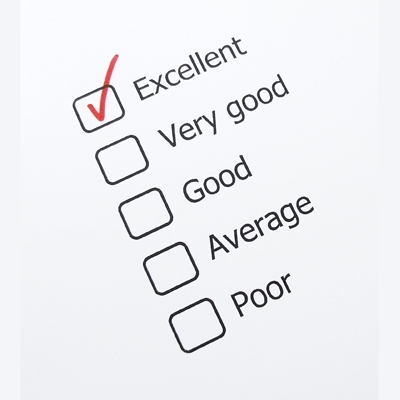eLearning Professionals' Must-Have eLearning Course Design Checklist
Ensuring that you've crossed off every item, this "to-do" list will allow you to create and implement successful, effective, informative, and practical eLearning courses for learners in both educational and professional settings. Without further ado, here is an in depth eLearning Course Design checklist that you can use to get your eLearning courses ready for launch:
eLearning Course Objectives
- Have you analyzed the eLearning needs and identified the budget and time constraints?
- Have all eLearning course audiences been examined and analyzed?
- Are the eLearning course objectives clear and do they include the criteria for evaluation?
- Are the eLearning course requirements consistent with the overall objectives?
- Does the structure of the eLearning course meet instructional goals?
- Have you completed the task analysis?
- Have you utilized a number of different instructional models or theories?
- Is the content offered in smaller, “bite sized” chunks for the learner?
- Have you made the headings clear and concise?
- Is the information grouped together in a practical way?
- Have you included a sufficient number of presentations (multimedia, etc)?
- Is the information broken down into bullet points (at least 5 per slide)?
- Does every eLearning course’s module contain a summary and your eLearning course a glossary of key terms?
eLearning Course Objectives' Resources
- Aims and objectives can sometimes be incredibly confusing but every eLearning course needs to have them. Here's an explanation of what they are, why they're needed and a simple way to write aims and objectives for eLearning courses. Check How To Write Aims and Objectives for eLearning Courses
- The best way to create terrible e-Learning is to dump content in an authoring tool (as if it was PowerPoint), add some questions and call it an eLearning course. Everybody knows (or should know) that learning development starts with defining clear learning objectives. The Use Perfect Learning Objectives To Boost The Quality of your e-Learning article precedes the course and tool to explain to you the basics on how to create good learning objectives.
- The Educational Videos and Conceptual Objectives article provides guidance on developing videos for training objectives on conceptual knowledge. In particular it focuses on using animation, stories and other strategies to produce great videos.
eLearning Course Assessments
- Are all assessments relevant, challenging, clear, and complete?
- Have you used a variety of testing methods throughout the eLearning course?
- Do you have a final assessment (test or exam) at the end of the eLearning course?
- Do you have a pass/fail structure in place?
- Are the assessments interactive and engaging, and do they clearly focus on the objective?
- Is there a feedback system that allows for instructor feedback in a reasonable time frame?
- Have you included a post eLearning course evaluation at the end of the course?
- Are the assessments free of new content that the learner has not yet acquired?
eLearning Course Assessments Resources
- Assessments are critical elements of instruction; they determine accomplishment of lesson objectives. However, you can design assessments to be more than an evaluation of what has been learned. You can design them to be a part of the learning process itself. Check How to design assessments that promote the learning process article to find more.
- "Did training deliver the results it was supposed to?", if structured strategically, they can also shed light on other elements of the training program, such as the quality of inclusiveness (Stakeholder engagement, Partnerships with other groups etc.) during the entire training initiative. Check Level 4 Training Evaluation - The key to measuring training value article to find more
- When you send training resources out for review, are you getting back the type of constructive feedback you need? The 3 Review Levels To Improve The Training Resource Review Process article outlines 3 levels of review, and gives you 6 tips on how to apply these levels to get great feedback and take back control of the training resources review process.
eLearning Course Content Creation
- Does the content flow, free of grammatical or spelling errors?
- Is the content current and in-line with the core curriculum?
- Does the content help to achieve the desired learning objectives?
- Is referenced content properly credited and quoted?
- Is the language used clear and descriptive (without being verbose)?
- Have you chosen text that is appropriate for the target audience and not gender specific?
- Is your tone consistent and appropriate?
- Have all stats, facts, and dates been checked and referenced?
- Is the information consistent? For example, are all dates listed in the same manner?
- Has correct capitalization and punctuation been used throughout?
- Is the content available in all local languages?
eLearning Course Content Creation Resources
- When it comes to eLearning, content means everything. So even though eLearning technology, structure, presentation and effective assessment methods are key factors for a successful eLearning course and an enriching learner’s experience, if eLearning content is not masterfully designed, all the rest will just go down the drain. So, the question is how to measure eLearning content effectiveness? Check Is eLearning Content King, Queen or a Slave? article to find more.
- When the content of your eLearning falls flat, or it just confuses the audience, it can be a stressful affair. From broken narratives to distracting designs and grammatical errors, see why your learners might be looking the other way. I highly encourage you to read the 8 Ways Your eLearning Content is Losing
- Make no mistake about it, content is king when it comes to creating a great eLearning experience for your employees. See what guidelines your eLearning content must follow to resonate more with your audience - Create eLearning Content Your Employees Care About
eLearning Course Graphics and Fonts
- Have you only used a maximum of four fonts throughout the entire course?
- Is the body text in the same font, and decorative text only used in the headers?
- Have you included the right line spacing and paragraph length?
- Have you used the correct font sizes and colors (are they all visible)?
- Is the body text left justified?
- Have you included a minimal amount of bold/italicized words?
- Are the images relevant, compressed and re-sized? Do you legally own all of them?
- Are all of the images the right file type and consistent (in terms of quality and size)?
- Are screen captures free of personal data and current?
eLearning Course Multimedia
- Have you included relevant and legally owned images and video elements in the eLearning course?
- Are all files compressed for easy download?
- Are all of the multimedia elements consistent (in terms of size and quality)?
- Is the audio synced to the video presentations within the eLearning course?
- Is the narration clear and easy to understand?
- Have you ensured that the audio or video can be controlled by the user (i.e. paused)?
eLearning Course Multimedia Resources
- 10 Tips To Effectively Use Videos in eLearning. Some say that videos hold the future of eLearning. I wouldn’t go that far. But what I can say is that videos can be a great medium in our domain if are well produced and strategically used together with other methods and techniques for the delivery of an effective eLearning course
- The Best Practices: Using Video in E-Learning article is intended to expand on the idea of video by giving tips and examples of best practices for using video in e-Learning.
- Video as a learning tool: A mixed blessing? Do you think the use of video during the instructional process helps or distracts the learner? Is video a mixed blessing? In our world of e-Learning, video has become an important element in the eLearning process as, according to research, visual demonstration of something new can lead to successful results. Yet, many eLearning developers hesitate to use this powerful tool. But is this hesitation an unfounded fear?
- Video in training and education. At least partly because of the huge success of YouTube, people get excited today about the potential of video for training and education particularly in the context of e-learning and distance learning. There is a lot of hype about it but we need to examine the real benefits before plunging in.
- Educational Video Production. Multimedia age has changed the role of teachers. The need for audiovisual aids to support e-learning, mobile learning, distance and blended learning have reformed the role of educators, who are now becoming producers to enrich their teaching with mediums like podcasts, videos, animations, interactive presentations, etc.
eLearning Course Accessibility
- Can you easily navigate through the entire eLearning course using just the keyboard and mouse?
- Have you used all of the ALT tags available?
- Are captions included for all audio or video elements that deal with core content?
- Are all of your fields and clickable areas easy to use?
- Have you included text for all of the elements that aren't text-based?
eLearning Course Accessibility Resources
- Making eLearning courses accessible is important for many companies as it ensures there are no barriers to staff being able to complete training. Some courses also need to meet the USA’s section 508 requirements. Check the Top 10 Accessible eLearning Tips to find more.
- The Creating Section 508 Compliant eLearning Solutions article suggests techniques an instructional designer can incorporate into eLearning projects in order to meet the needs of people with disabilities. The article also outlines steps for developing 508 compliant training courses.
- Is your e-Learning course accessible? Take a look at the 5 Steps to Help You Create 508-Compliant Content to help you create a 508-compliant e-Learning course.
eLearning Course Navigation
- Is the eLearning course easy to navigate for the learner?
- Are all eLearning course modules featured in their correct sequence?
- Are hyperlinks displayed clearly and do they all work properly?
- Have you included backward links so that learners can return to previous screens?
- Is there an abundance of navigation graphics? If so, whittle down to only what's needed.
- Is there a table of contents and a map of the course?
eLearning Course Navigation Resources
- How To Improve eLearning Course Design Usability By Adopting The 10 Usability Heuristics. Asynchronous eLearning is different from traditional classroom studying and requires strong motivation and self-discipline from learners. As there is no person-to-person contact and immediate reaction to problems emerging in the process of learning, eLearning professionals should pay special attention to eLearning course navigation and usability. To help you remove all the barriers to effective eLearning course design the article provides an idea of what eLearning usability is and how to improve it by applying common usability heuristics.
- Site Navigation in Online Education. Like any other website, online courses need to be easy to navigate. Most online courses fall into two styles. Each has its own benefits. Which style do you prefer?
eLearning Course Technical Issues
- Does the eLearning course load within a reasonable time frame?
- Are shortcut keys available to the learner?
- Has an FAQ page, with hyperlinks to other areas of the eLearning course, been created?
- Have all hardware and software requirements and recommendations been listed?
- Have the dimensions of the eLearning course been optimized for users?
- Is the eLearning course viewable in all of the major web browsers?
- Can the eLearning course material be printed with ease?
- Are assessments being timed properly?
Overall eLearning Course Design
- Do you have a clear syllabus in place at the beginning of the eLearning course?
- Is the eLearning course aesthetically uniform and have you included branding elements throughout?
- Is the color usage consistent and appropriate?
- Are all of the elements visible with the chosen color scheme?
- Does at least half the screen consists of white space, to keep the look clean and organized?
- Have you verified that all content fits the screen (no horizontal/vertical scrolling)?
- Have you avoided backgrounds/patterns that may be distracting for the learner?
- Can instructors easily add or modify the content within the course?
Overall eLearning Course Design Resources
- Your guide to designing and implementing awesome eLearning courses. At the Awesome e-Learning Course Guide you will find the top 10 tips for creating awesome eLearning courses that are effective, engaging, and immersive.
- TOP 5 tips to Convert your Traditional Course into an eLearning format. Several eLearning professionals in the eLearning industry want to convert their f2f courses into an eLearning format. However, several of them do the same mistake again and again. They believe that by simply moving their content such as PowerPoint presentations, videos, audios, and documents to a Learning Management System with the use of an eLearning Content Authoring tool they have converted their face to face courses to an eLearning format. In my opinion, they have converted their traditional courses to an electronic format.
- Would you be interested in a Compact Instructional Design Review Checklist? What would you say, if I tell you that at this article you will find 12 Free Instructional Design and eLearning Review Checklists?
- Are you interested in integrating Micro-eLearning techniques into your eLearning course? Would you like to improve performance and provide your students or employees with the most beneficial eLearning course design? Check the 7 Micro-eLearning Techniques to Improve Performance article.
- In The Basics of Scenario-Based e-Learning article, I will walk you through the various aspects of scenario-based eLearning, so that you can design eLearning courses which not only keep the learners motivated and engaged, but also provide them with the best possible educational experience that effectively enhances their skill sets and/or knowledge base.
Last but not least, before launching the eLearning course, you'll also want to conduct a final eLearning course test, to ensure that all of the elements are working. Watch all of the videos in their entirety, make sure that the overall appearance is cohesive and adheres to your brand, and verify that even those who may not be “tech savvy” can navigate through the eLearning course. Also, don't forget to include contact information on the eLearning course, so that learners can receive assistance if they do run into any issues.








